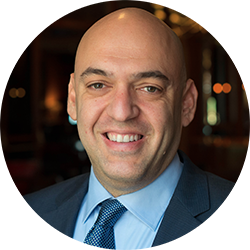Drug use among teens generally continues to decline, according to the annual survey released in December 2011 by the National Institute for Drug Abuse. The report entitled, “Monitoring The Future” shows the results of surveys completed by more than 40,000 students in 8th, 10th, and 12th grades. The survey was first conducted in 1975 and shows record-low levels of cigarette and alcohol use among teenagers.
The non-medical use of prescription drug use among teens, however, remains alarmingly high. Fifteen years ago, the non-medical use of prescription drugs by teens wasn’t perceived to be a problem by policymakers or law enforcement. Now, the non-medical use of Ritalin is approximately the same as teen use of cocaine, and less than half as prevalent as the use of some other prescription drugs. For example, between eight and ten percent of high school seniors reported that they have used either OxyContin or Vicodin in the past year for non-medical reasons.
Parents and their teens are often blind to the serious legal risks that come from misusing prescription drugs. Such drugs are often perceived as safer to use than illegal drugs because they can be obtained through a prescription. But that’s not how the law sees it. OxyContin is legally classified as a narcotic; Vicodin is classified as an opiate, as is heroin. It is a criminal offense to use these drugs without a prescription and prosecutors have brought charges for the sale and distribution of such drugs to others. This is especially problematic for high-school seniors who may be charged as adults if they are 18 or older.
According to the report, approximately three-quarters of prescription drugs that are used for non medical uses are obtained from family or friends. Sometimes these drugs come right from the parent’s medical cabinet. The Survey results indicate that teenagers are much more likely to get prescriptions drugs for free from a friend or relative than buy it from a stranger or a dealer. For example, between 2009 and 2011, almost three quarters of high-school seniors who used prescription drugs for non-medical reasons reported that they received tranquilizers from friends or family for free at least once during the prior 12 months. By contrast, only a quarter of such students reported buying tranquilizers from a stranger or dealer. In fact, teens are more likely to buy prescription drugs from friends or family than from strangers.
But that is not how prosecutors in Southern California tend to view it. They tend to err on the side of charging teens with possession of prescription drugs with an intent to sell such drugs. There are several scenarios in which this takes place. For example, a kid gets his or hands on a bunch of Adderall, Ritalin, or Oxy and stores it in improper packaging – a ziploc baggie or a pill bottle with the prescription label peeled off. When the police find it, they arrest the kid on suspicion of possession for SALE of a controlled substance. Most District Attorney’s in juvenile court file the case accordingly. This also happens when kids “trade” pills with each other – so a kid can get caught with a mini-pharmacy of sorts (a few Ritalin, some Oxy, some Vicodin, etc.). This will also likely be charged as possession for sale.
In either scenario, the quantities of pills don’t have to be that high. Juveniles have been charged with an intent to sell drugs even if, at the time of the arrest, the police found as few as a dozen pills. Even though the reality is that these kids ARE using it for personal use, the District Attorneys don’t see it that way. They will look at the number of pills, the fact that they are separately bagged, that there’s a variety, and if they find ANY amount of money on the kid – even a hundred bucks–they will allege that the money was proceeds from narcotics sales and use it to bolster the charge.
While every drug-related conviction has potentially serious consequences for teens, this is particularly true if the conviction involves possession for sale. Once someone is convicted of such a charge, they are branded by the courts and probation department as a drug dealer. This in turn makes it much more difficult to get off of juvenile probation.

